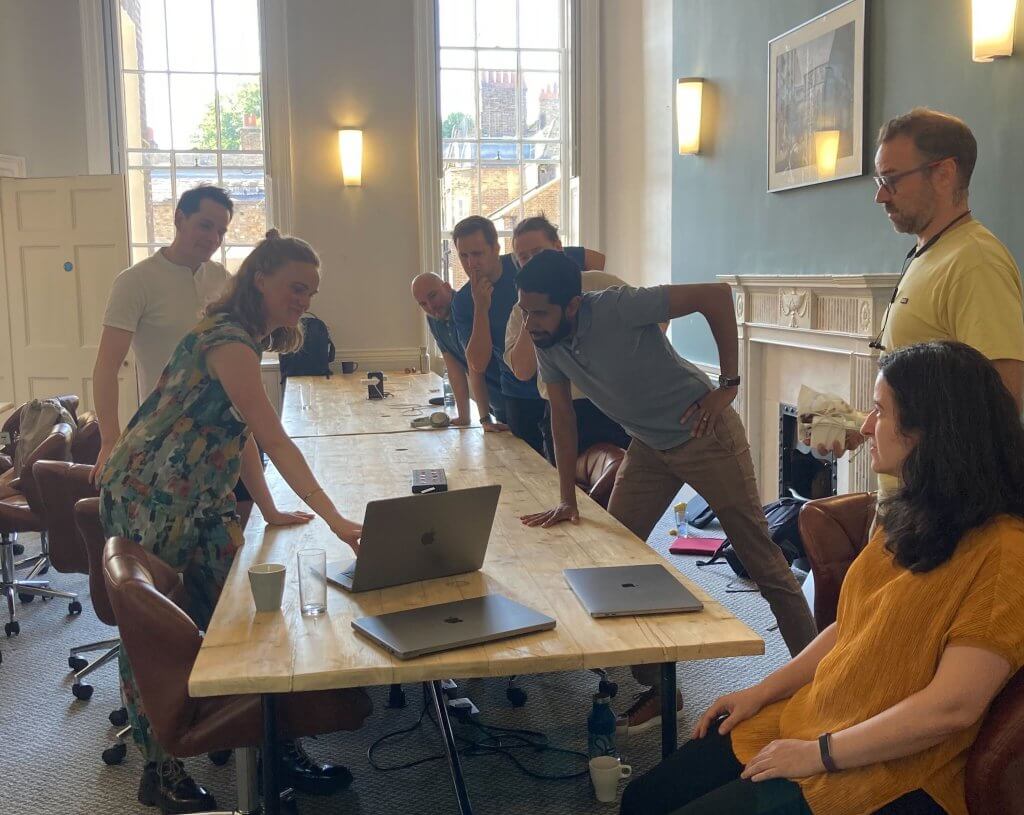
Meet the Seer: Þórdís Þorsteins (Thordis Thorsteins)
Discover more about the people in our team and how they came to work in cybersecurity. Welcome to our new series introducing you to the wonderful people who make up our team at Panaseer. This month we’ve spoken to Thordis, who joined our data science team in early 2018. Find out why Thordis’s background in ballet and poetry gave her a head start in solving complex maths problems...
What was your dream job growing up?
I wanted to be a poet when I was a kid. I’ve always had an interest in mathematics and logic, but with a creative side as well. My creative side came out in poetry and dance in my spare time, but in school and throughout university, I leaned towards maths or science. They complement each other nicely – poetry and dance often contain logic and patterns, which for me, satisfies the same thing as solving a mathematical problem, but in a completely different space.
What brought you to cybersecurity and Panaseer?
I went on to do maths and pure maths at university, always doing a bit of computer science on the side. In between my bachelor's and masters, I worked as a data scientist in risk management for a bank, which at the time didn’t feel like a natural route to cybersecurity. But it turns out it’s super relevant. Looking back, you can easily draw a line between the two. I met Panaseer at Silicon Milk Roundabout in 2018. I liked the people I spoke to, the sound of the company, that it was small (not so much now, though) and I was open to a new industry.
How do you describe your job to your mum and dad?
I would explain what the company does – a b2b data platform that helps organizations understand their security – and talk about working with different people in the company. As a data scientist, we help the process by bringing data together, figuring out relevant insights, and presenting them in a useful way. Then people start to lose the thread and say: “So you work with numbers?” Sure.
So, what do you actually do, day-to-day?
As a data scientist, I wear a few hats. I take part in a lot of different company projects. The dev side of the company is made up of initiative teams, each with a product manager and a mix of engineers and data scientists. Their goal is iterative development of the product – improving features, adding new ones, and making sure that the product is constantly and consistently improving.
As a senior data scientist, I also help with wider company projects. One of my main projects at the minute is product analytics. The goal is to compare: “How do we think our product should be used to get the most value?” versus “How is our product actually used?” This allows us to see opportunities where we could help customers better understand the product but also creates a data-driven way of thinking about the most valuable parts of the product. Instead of focusing on functionality that we think is cool, we take a data-driven approach to check if our customers use it, and combining this with qualitative insights from user feedback, we try to understand whether they find it valuable.
There’s another interesting project I’m working on with our customer success and engineering teams called “Security Posture Analytics”, which supports our Security Performance Management function. The aim of this project is to work proactively with customers to improve their security posture and try to leverage the platform in the best way to help them.
What are you most proud of about your role at Panaseer?
I’m really proud of how far our data science team has come in the last four years. We’ve got to a place where we can do so much more than when I started – more formal product analytics, improving security analytics, and really maximising the value that we are getting from data. That means we are making the right decisions for our product and that the customers are benefiting as much as possible. And that's pretty cool.

On top of the data science work, I’m also part of the Diversity and Inclusion (D&I) group here at Panaseer. I help to set our D&I roadmap in terms of themes, workshops, and company events. We want to keep the culture at Panaseer open and honest. The D&I team helps provide both support and learning opportunities, fostering an inclusive work environment. I'm proud of the fact that D&I continues to be a focus at Panaseer. It's a group of people from across the company that are volunteering their time to make sure that diversity and inclusion remain a priority. It’s not just members of the group, though – the rest of the company are really engaging in conversations, attending events, and providing support. That's something I'm definitely proud of.
What non-cyber related skill has been the most valuable to you?
With a lot of my projects, I don’t do much of the actual analysis anymore. As a senior data scientist, I tend to set them up, structure them, and keep them running. With that in mind, I’ve found teaching or tutoring to be a really valuable skill. Throughout my life, I've done various forms of teaching – I was a tutor at both university and high school, I've set up camps to help people in maths, physics, and dancing. I tend to naturally take up a teaching role wherever I go. And I think that's been quite valuable here because, as the company has scaled and as we're taking on new challenges, it’s important to be able to share knowledge.
And one more for fun: Any current podcast recommendations?
To see our open roles, or to learn about becoming a Seer, visit our Careers page for more information.


